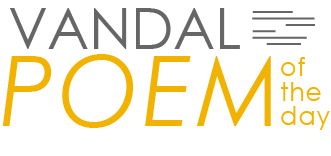Whoever did this must be
kin to that matador I saw
booed out of the arena for not
basking longer in the task.
Why else would your snout
be sewn in that hasty, ragged
line and set off center?
Your eyes are two wool holes
with nail heads for pupils.
When I peer into the rust
of them I can’t even see
an oblong version of myself.
Bear, if this is an elegy,
you ought to have a name
more specific than Bear.
Not that you care, but I am
going to call you Lou Reed.
Because whoever made him
quit working with the face
still a bunch of half-done
lumps of clay. Also because
he’s one whose output
illustrates how art is not
getting what you want.
Art is getting only what
he decides to give you.
Lou Reed, you give me
the impression that a career
spent so close to killing
only becomes more intolerable
as it goes on. Even if
one is elegant, thoughtful,
and perfect at it, after
a while one’s limbs are
going to revolt. Lou Reed,
this is what I think. When
the taxidermist hammered
those nails into your eyes
it was the final step
in his coming to hate
anyone who could look
at his life’s work work and not
regret being human.
Once he finished up with you,
he left his studio. He walked
to a lake where a pair of swans
were doing circles. He liked
the elegance of their bodies
on the water. He gave thanks
that the way they mate for
life makes these creatures
no less adamant and cruel
First he fed the swans
the crackers he had brought.
When those were gone
he let them have his hands.
from The Newest Employee of the Museum of RuinFind more by Charlie Clark at the library
Copyright © 2020 Charlie Clark
Used with the permission of The Permissions Company, LLC on behalf of Four Way Books.
